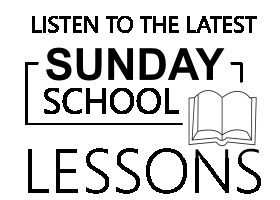We still find Moses on Mt. Sinai receiving instructions from God. Last week, we learned what made up the priestly attire, although little was explained why the priests’ clothing was the way it was. God told Moses to anoint, consecrate, and ordain the priests. That is the topic of this lesson.
Anointing, Consecrating, and Ordaining
Aaron and his sons were “ordained” to the priesthood, which Exodus 29 and Leviticus 8-9 describe in detail. The Hebrew expression for “ordain” literally means “to fill the hand.” The terms–anointing, consecrating, and ordaining–refer to the handing over of the duties of the priesthood to those whom God had chosen. Their duties were now “placed into their hands.” Leviticus 16:32 and 21:10 also lets us know that Aaron’s successors to the Office of High Priest were also ordained. Priests were also “consecrated,” that is set apart (Exodus 29:1, Leviticus 8:10-12), and “appointed” to the priesthood (Numbers 3:10) and to specific tasks (Numbers 3:32, 36).
The First Steps of Priestly Ordination
Read Exodus 29:1a
– May someone serve as priest without being “consecrated?”
– Discuss: what if someone “felt called” to be a priest? What then?
Read Exodus 29:1b-3
– Three animals were to be presented as sacrificial offerings for ordination. What did God specify about the animals?
In Leviticus 8, these animals were called, “The bull of the sin offering” (vs.2), “the ram of the burnt offering” (vs. 18), and “the ram of ordination” (vs. 22). Thus, they served different purposes in the ordination rite.
– Like three different animals being offered, what do we find about the bread?
Exodus 29 then begins to go into more specifics about the animals, bread, and the procedures of ordination.
Read Exodus 29:4-9
– What is happening here so the priest could be holy enough to do what God has called him to do?
– How long was this priesthood to endure? (vs. 9)
– How does this priesthood still go on concerning the sacrifices Christians make in their priestly function in the New Covenant? (Romans 12:1)
– How does this priesthood still go on in leading New-Covenant worship and bringing God’s forgiveness to His people? (Matthew 28:19-20, Luke 24:27, Luke 22:14-20, John 20:23)
The Sacrifice of the Bull
Read Exodus 29:10-11
– What do Aaron and his sons do with the bull?
God does not say why Aaron and his sons are to lay their hands on the bull. However, the verbal form in the Hebrew text for “lay their hands” denotes “the pouring of one’s personality into another being, the creation of a representative or substitute.” The laying on of hands, then, is for transference: The unholiness and impurity within Aaron and his son are transferred to the bull.
Read Exodus 29:12-14
– Remembering what we learned in an earlier lesson about the horns of the altar, why would the blood of bull be poured on the horns?
– What was burned outside the camp?
This is the first time the Bible used the expression, “outside the camp,” which becomes an idiom to refer to a place that is defiled and unclean.
– Where was Jesus crucified, in the Temple or “outside the camp”? Why?
Encouraging Jewish Christians to remain steadfast in the faith, the book of Hebrews encouraged those Christians to live their lives as a pleasing sacrifice to God. “Jesus also suffered outside the gate to make the people holy with his own blood. Let us, then, go to him outside the camp, bearing his shame” (Hebrews 13:12-13).
The Sacrifice of the Ram
Read Exodus 29:15-18
– How much of the ram was burnt?
– How did God receive this offering? (vs18)
“Pleasing aroma” is a description showing that God accepted the sacrifice (Leviticus 1:9, 13, 17). In the New Testament, Paul used that expression to extol the Ephesian Christians to live the life of faith: “Therefore, be imitators of God, as dearly loved children. Walk in love, as the Messiah also loved us and gave his life for us as an offering and sacrifice, a soothing aroma to God” (Ephesians 5:1-2).
The Ram of Ordination
Read Exodus 29:19-21
– What parts of the priest’s body was consecrated to the Lord?
– What is the significance of these body parts?
– Why the right side instead of the left?
Excursus: Connecting the Blood for Old-Covenant Priestly Ordination and the Blood We Receive in the New Covenant
The heart of Christian worship is the gift of Jesus’ body and blood for us in His Supper. For only through His blood do we have access to God in heaven, the angels, and even the saints who have died now in heaven. That’s why our Lutheran Confessions say, “The Mass is for the purpose of giving the Sacrament” (AC 24, para 34). Describing what happens during Christian worship, the book of Hebrews says:
You have come to Mount Zion, the city of the living God, the heavenly Jerusalem, to countless angels in festive gathering, to the assembly of the firstborn whose names have been written in heaven, to God who is the Judge of all, to the spirits of righteous made perfect … [Hebrews 12:22-23]
In the Old Covenant, only the priests were allowed to approach God as they served in their priestly roles in the Tabernacle/Temple. However, before they could do their priestly duties, they had their bodies sprinkled with blood at their ordination into the priesthood, which cleansed them from impurity and made them holy. Their right ears were smeared with blood, so they could hear the holy word of God. Their right thumbs were smeared with blood, so they could handle the holy things of God. The big toes of their right feet were smeared with blood, so they could walk on holy ground (Exodus 29:19-20). Then blood mixed with the holy anointing oil was sprinkled on them and their vestments to consecrate them (Exodus 29:21). That was how God shared His holiness with them. They could approach God only as long as they remained clean and holy.
For us, as those brought into God’s royal priesthood, during the Divine Service when we enter the heavenly Jerusalem, we can do what no priest ever dared to do in the Old Covenant. We can approach God the Father in the heavenly sanctuary and serve him there together with Jesus. For Jesus hasn’t just sprinkled our bodies with His blood; He sprinkles it on our hearts, our conscience, for He even gives us His blood to drink in Holy Communion.
————-
Read Exodus 29:22-25
– What takes place with this offering is what type of offering to the LORD? (vs. 25)
– If this is a “food offering,” then what is God doing with the Old-Covenant Priests who are being ordained?
Read Exodus 29:26
– Did the priest have anything to eat in this “communion”?
The Peace Offering
The text of Exodus takes a short excursion on how Israelites who were not priests could also have such a “communion” with God.
Read Exodus 29:27-28
– In the Old Covenant, how did the people of Israel participate in such a “communion”?
The Final Act of Priestly Ordination: The Meal
Exodus resumes with the priestly meal at their ordination.
Read Exodus 29:31-34
– Discuss who may not participate in this covenant meal.
Excursus: Early Church Practices and the Tie-In to the Rite of Old-Covenant Priestly Ordination
The early Christian Church adopted the pattern God commanded in the Old-Covenant for priestly ordination. For those being brought into the New Covenant and the Church, that pattern also brought one into the Royal Priesthood (1 Peter 2:9), sometimes referred to as the “universal priesthood of all believers.” However, in the New Covenant, we find getting dressed followed the anointing, not precede it. Thus, adult catechumens and/or infants were washed (baptized, as baptism was done naked), anointed (chrismation/confirmation), dressed, and then they ate, that is, participated in the Lord’s Supper.
We read from Tertullian (160-225, from Carthage):
Having come out of the baptismal pool, we are anointed with blessed oil according to the ancient discipline in which it was customary to be anointed with oil spread on the horn to receive the priesthood. It is with this oil that Aaron was anointed by Moses; from which comes his name of the Anointed (christus) which comes from chrisma, meaning “anointing.” (Tertullian, “On Baptism,” ch.7; ANF 3:672)
From Hippolytus (170-235, from Rome):
After this [being baptized], pouring the sanctified oil from his hand and putting it on his head he [the bishop] shall say: “I anoint you with holy oil in God the Father Almighty and Christ Jesus and the Holy Spirit.” And signing him on the forehead he shall give him the kiss of peace … (On The Apostolic Tradition, 21:22-23, Stewart-Sykes translation)
From On the Apostolic Tradition we find that the priestly “ordination” rite for those being brought into the Church consisted of baptism, anointing with oil (chrismation/confirmation), and the Lord’s Supper. We find this sequence in chapter 21, “On the handing over of holy baptism.”
The early Church’s sequence of someone being baptized, anointed (chrismated/confirmed), and then participating in the Lord Supper mirrored the ordination of priests in the Old Covenant. In Old-Covenant ordination, the final act was the priest eating part of the sacrifice. God “ate” His part of the sacrifice and the priests ate their portions. Thus, in the Old Covenant, we see a “communion” of sorts. Through such a similar sequence, one was ordained into the New-Covenant’s Royal Priesthood.
————–
The Length of the Old-Covenant’s Ordination Rite
Read Exodus 39:35-37
– How long did the Rite of Ordination last in the Old Covenant?
Leviticus 8:33 confirms that this was one ceremony that lasted seven days.
Next Week: We see God move from the rite specific to priestly ordination to the practice of regular burnt offerings.


